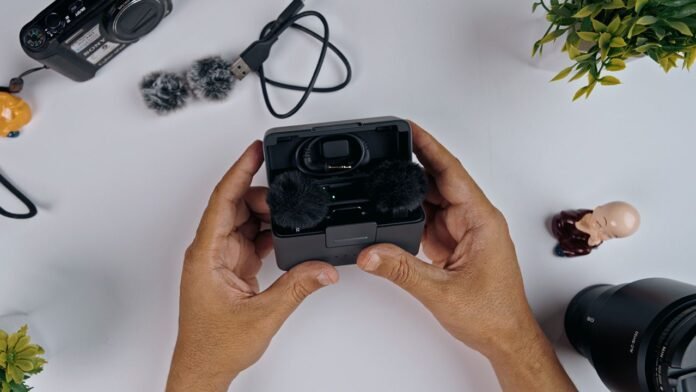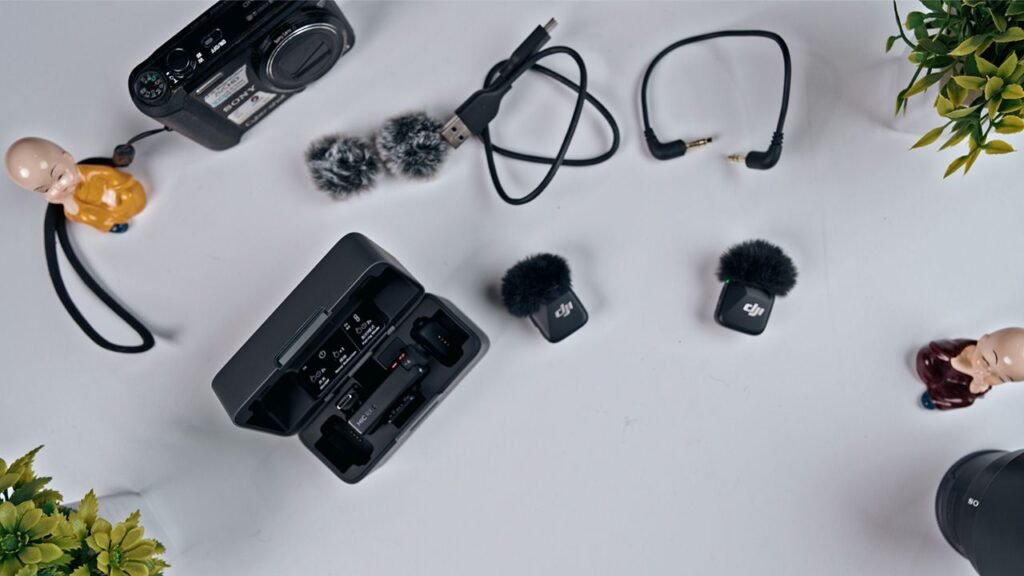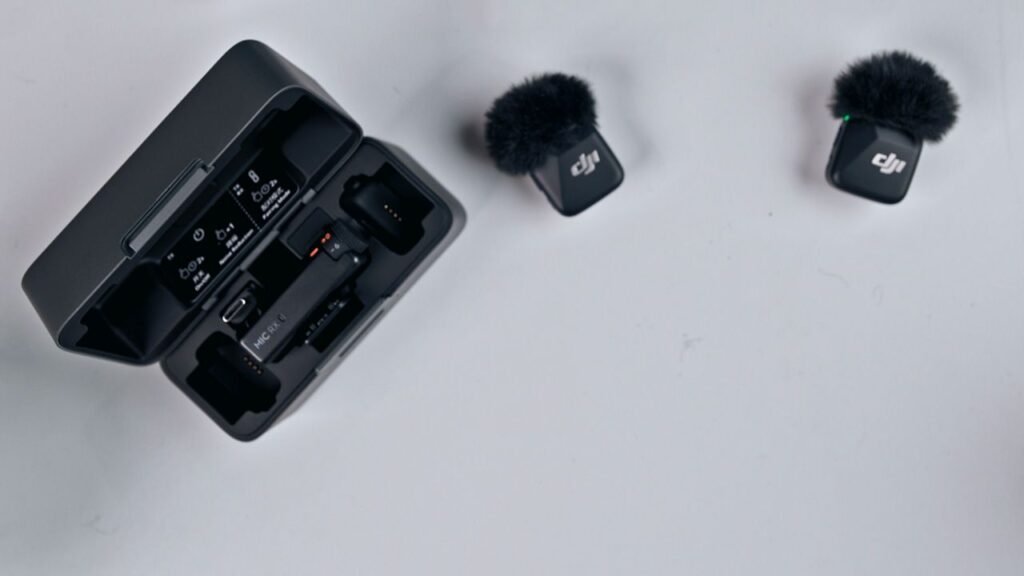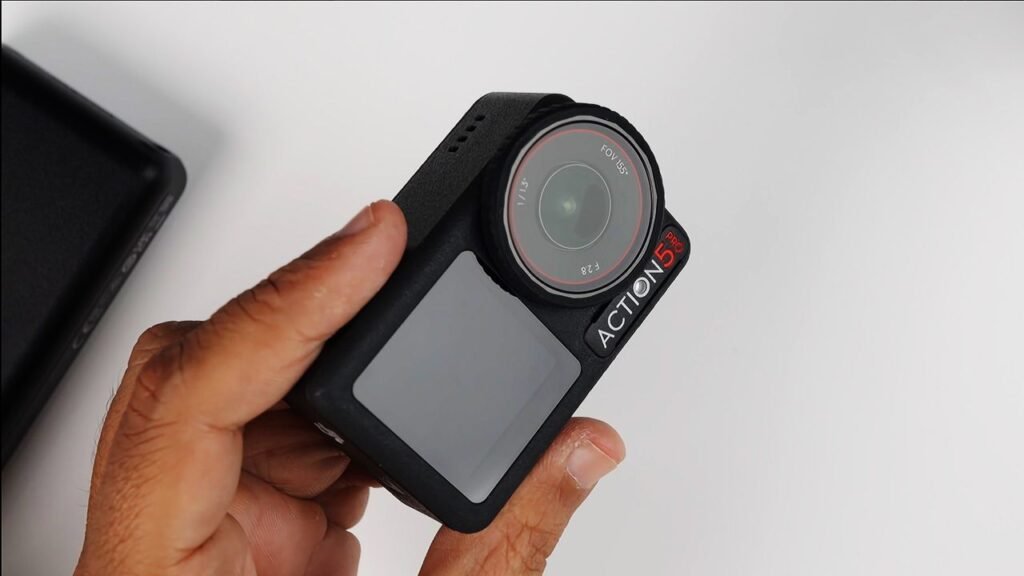DJI Mic Mini: I recently bought a mic for my moto vlogging from designinfo.in and here is how much it cost and what are its features. And why I chose this mic over other mics
Introduction
The DJI Mic Mini is making waves as a compact, lightweight, and budget-friendly wireless microphone system designed for content creators, vloggers, and filmmakers. Whether you’re shooting on a smartphone, DSLR, or action camera, this mic promises professional-grade audio without the bulk. In this in-depth review, I’ll break down its features, performance, pros and cons, and help you decide if it’s worth adding to your creative toolkit.
What’s in the Box?
The DJI Mic Mini comes in multiple kits, but I bought the 2-Transmitter + 1 Receiver Kit which is ideal for most creators. Here’s what you get:
Charging Case: Stores and charges transmitters/receiver.
2 Transmitters: Ultra-lightweight (10g each) with magnetic clips.
1 Receiver: Compact design with hot-shoe mount.
Accessories:
2 Wind Muffs (black for light wind, gray for heavy wind).
3.5mm TRS cable (for camera/device connectivity).
USB-C adapter (for phones/laptops).
USB-C charging cable.
The case cleverly stores cables and wind muffs in the lid, making it perfect for on-the-go creators.
Key Features of the DJI Mic Mini
Transmitter Design & Comfort
Featherlight Build: At just 10g, it’s half the size of the DJI Mic 2, making it nearly invisible on clothing.
Magnetic Clip: Secures discreetly to collars or shirts (works with both light/dark clothing).
Wind Muff Compatibility: Reduces wind noise in outdoor environments.
Battery Life: 11 hours per transmitter + auto-charging in the case.
Receiver Functionality
Gain Control Dial: Adjust volume directly on the receiver (-12dB to +12dB).
3.5mm Output/Headphone Jack: Monitor audio in real-time.
USB-C Passthrough: Charge your phone while recording.
Hot-Shoe Mount: Attaches seamlessly to cameras.
Smart Recording Modes
Dual-Track Recording: Split audio from two transmitters into separate tracks (left/right channels).
Mono + Safety Track: Records a backup track at -6dB to prevent clipping.
Noise Cancellation: Activate via transmitter button; fine-tune strength in the DJI Mimo app.
Seamless Device Compatibility
Cameras: Plug-and-play setup via 3.5mm cable.
Phones/Laptops: Use the USB-C adapter for Zoom calls, streaming, or mobile recording.
DJI Osmo Integration: Pair with Osmo Action 4/5 or Pocket 3 for one-touch recording control.
Performance Tests
Audio Quality
Indoor/Outdoor Clarity: Crisp vocals with minimal background noise.
Noise Cancellation Demo: Noticeably reduces ambient sounds (e.g., AC hum, traffic).
Audio Limiter: Prevents distortion during loud speech or sudden volume spikes.
Range Test
I tested it at around 400+ feet range: it maintained clear audio in my tests, which is enough for my needs. And I probably won’t need to go beyond that. The company claims you can use it up to 400 meters without any problems. But how it works depends on the situation and how many obstacles are in the line of sight between the transmitter and the mic.
Bluetooth Limitation
Poor Bluetooth Audio: When pairing the phone directly via Bluetooth, I got poor quality audio but that might be because of the age of my phone. But when I used it with a receiver, I had no issues and got good audio so I would recommend using a receiver for best results.
Setup Guide
For Cameras
Attach the receiver to your camera’s hot shoe.
Connect the 3.5mm cable to the receiver and camera’s mic input.
Power on transmitters – they auto-pair with the receiver.
For Phones/Laptops
Attach the USB-C adapter to the receiver.
Plug into your device’s USB-C port.
Select the DJI Mic Mini as your audio input.
Pros & Cons
👍 Pros
Compatible with dji osmo pocket 3, Osmo Action 4 & Dji Osmo Action 5 Pro.
Ultra-compact and lightweight design.
Excellent battery life with case charging.
Intuitive gain control and noise cancellation.
Affordable pricing for a 2-mic system.
👎 Cons
No built-in recording (unlike DJI Mic 2).
Bulky receiver when attached to phones.
Bluetooth audio quality is disappointing. (as mentioned above with the phone I tested). Otherwise I had no issues
Pricing & Alternatives
I have written the price here in USD but you can check it online as per your convenience.
2-Transmitter + 1 Receiver Kit: $169 (best value).
1-Transmitter + 1 Receiver Kit: $89 (no charging case).
Single Transmitter: $59 (for Osmo Action/Pocket 3 users).
Alternatives:
Rode Wireless ME: Similar price, fewer features.
Hollyland Lark M2: No noise cancellation or safety track.
How much did it cost me and why did I buy it
Let me tell you that I bought this from designinfo.in for Indian Rs 12999, and I bought it for my moto vlogging. I will use this mic with my dji osmo action 5 pro. If I wanted, I could have used a lavalier mic as well, but with the use of this mic, I will be able to mount my action camera at different places without any hassle, and for that, I will not have to worry about wires. For example, let’s say I have to mount the action camera on the helmet, and after some time, I have to mount it on the bike’s handlebar. Then I will be able to do it easily, and I will also get different shots, and there will be no problem with wires.
Final Verdict
The DJI Mic Mini is a game-changer for creators prioritizing portability and simplicity. While it lacks pro features like 32-bit float recording, its noise cancellation, dual-track modes, and seamless device compatibility make it ideal for YouTube, TikTok, or podcasting. For under $200, it’s a steal compared to bulkier competitors.
Who Should Buy It?
Mobile creators needing lightweight gear.
Beginners seeking plug-and-play audio.
DJI Osmo/Pocket 3 users wanting expanded functionality.
Who Should Skip It?
Professionals requiring built-in recording.
Those needing lavalier mic compatibility.
Got questions? Drop them in the comments! And if you’ve tried Designinfo.in, share your experience—let’s uncover more hidden gems together.
P.S. This isn’t sponsored—just wanted to share my thoughts.
DJI Osmo Action 5 Pro: A Budget-Friendly Gem from Designinfo.in?





